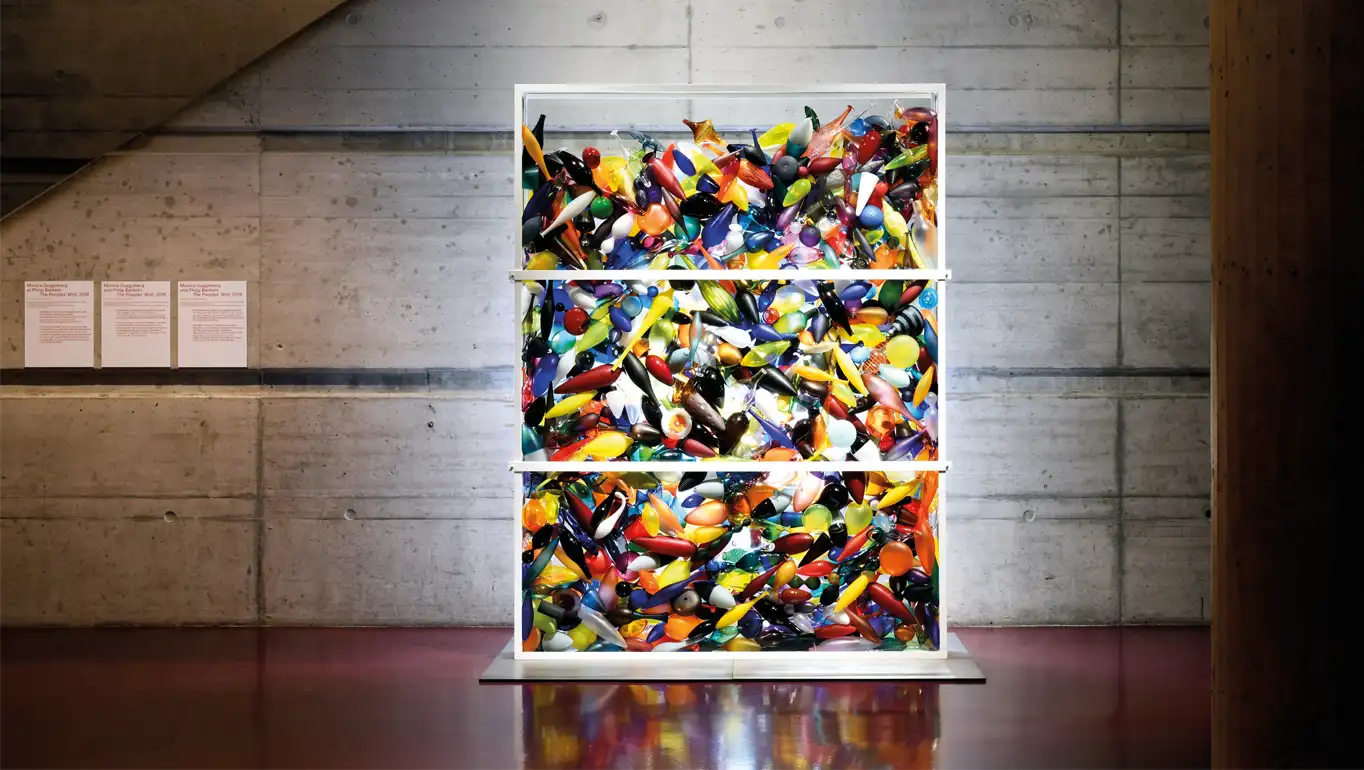A space where humanitarian action, heritage, and art come together to foster understanding, dialogue, and engagement.
Opened in 1988, the International Red Cross and Red Crescent Museum has, in recent years, expanded its focus to explore past, present, and future humanitarian challenges through heritage, art, and diverse perspectives. More than a museum, it is the only space in International Geneva that serves as a welcoming social forum—bringing together humanitarian workers, diplomats, researchers, artists, students, families, and people from all walks of life to engage with the most pressing humanitarian challenges of our time. Located in the heart of International Geneva, the Museum serves as both a space of memory and a platform for the future, ensuring that humanitarian principles remain relevant and accessible to all.
Bridging the gap: why art matters
Humanitarian crises can seem distant or abstract from a wealthy and peaceful city like Geneva. For many of the Museum’s 120,000 annual visitors, they can feel like events that happen elsewhere—seen in the news rather than experienced firsthand.
The Museum bridges this gap by creating an inclusive space where humanitarian action is not just observed but connected to every visitor’s personal reality through a conversation grounded in its values. Through exhibitions, publications, podcasts, and participatory projects, it encourages visitors to challenge assumptions, reflect on humanitarian principles, and consider how these values apply here and now.
Art plays a key role in this approach, offering new perspectives and helping us navigate complexity. Currently on view, ‘Tuning In – Acoustics of Emotion’ explores humanitarian action through sound and voice. Drawing on extraordinary archives and the work of leading contemporary artists, it asks key questions like: Whose voices are heard? What does it take to truly listen?
The Museum also welcomes an artist in residence, Zahrasadat Hakim, whose work weaves together themes of displacement, resilience, and memory.
In collaboration with visitors, she is creating a large-scale woven tapestry using traditional techniques, where each thread tells a personal story.
Two major artworks have also recently enriched the Museum’s permanent display. The Peoples’ Wall by Monica Guggisberg and Philip Baldwin—a monumental glass installation composed of hundreds of individually sculpted pieces—celebrates multiculturalism and the strength of human connections. Future Memory – Tricycle, donated by ICAN and the City of Geneva, represents the tricycle that belonged to three-year-old Shinichi Tetsutani, who perished in the atomic bombing of Hiroshima in 1945. This powerful piece serves as a stark reminder of the devastating humanitarian consequences of nuclear weapons.
A catalyst for dialogue in International Geneva
More than an exhibition space, the Museum is an active partner in Geneva’s humanitarian and diplomatic ecosystem. In 2024 alone, it hosted 35 high-level visits, including heads of state, UN representatives, and diplomats. And with over 300 institutional partners worldwide, the Museum builds bridges between humanitarian professionals, academics, artists, and local communities, reinforcing its role as a hub for research and education on humanitarian action.
A space for connection, well-being, and innovation
The Museum is also a place to meet, reflect, and recharge. Recent renovations have transformed it into a welcoming social space, embracing sustainability and circular architecture— a first for museums in Switzerland. The new Café HINIVUU serves as a gathering spot for international professionals, students, and locals alike. Whether for quiet reflection, an afterwork discussion, or a creative workshop, the Museum offers an inspiring setting. This approach extends to its gardens, where students from EPFL and the Geneva Institute of Technology, Architecture, and Landscape collaborate to enhance biodiversity and visitor experience.
The Museum’s commitment to care continues far beyond. In collaboration with over 10 social organizations, its suspended ticket initiative allows visitors to donate entries to those who might not otherwise afford them, reinforcing its mission of accessibility and solidarity.
Why visit the Museum now?
As Geneva navigates an evolving and uncertain global landscape, we need spaces that bring people together—not just to observe humanitarian action and its principles, but to actively engage with them. In this sense, the Museum is an essential and dynamic tool, helping us understand our world and find ways to make a positive impact in our daily lives, whatever our reality and path.
Fundamentally, the Museum is a place of care. It offers an opportunity to step outside institutional spaces and reconnect with humanitarian values through art, heritage, and personal testimony—not as something distant, but as something that concerns us and connects us all, here and now.
Want to learn more? Explore our exhibitions, events, and latest news at: www. redcrossmuseum.ch
This article was written in collaboration with Club Diplomatique de Genève. Visit their website here.



